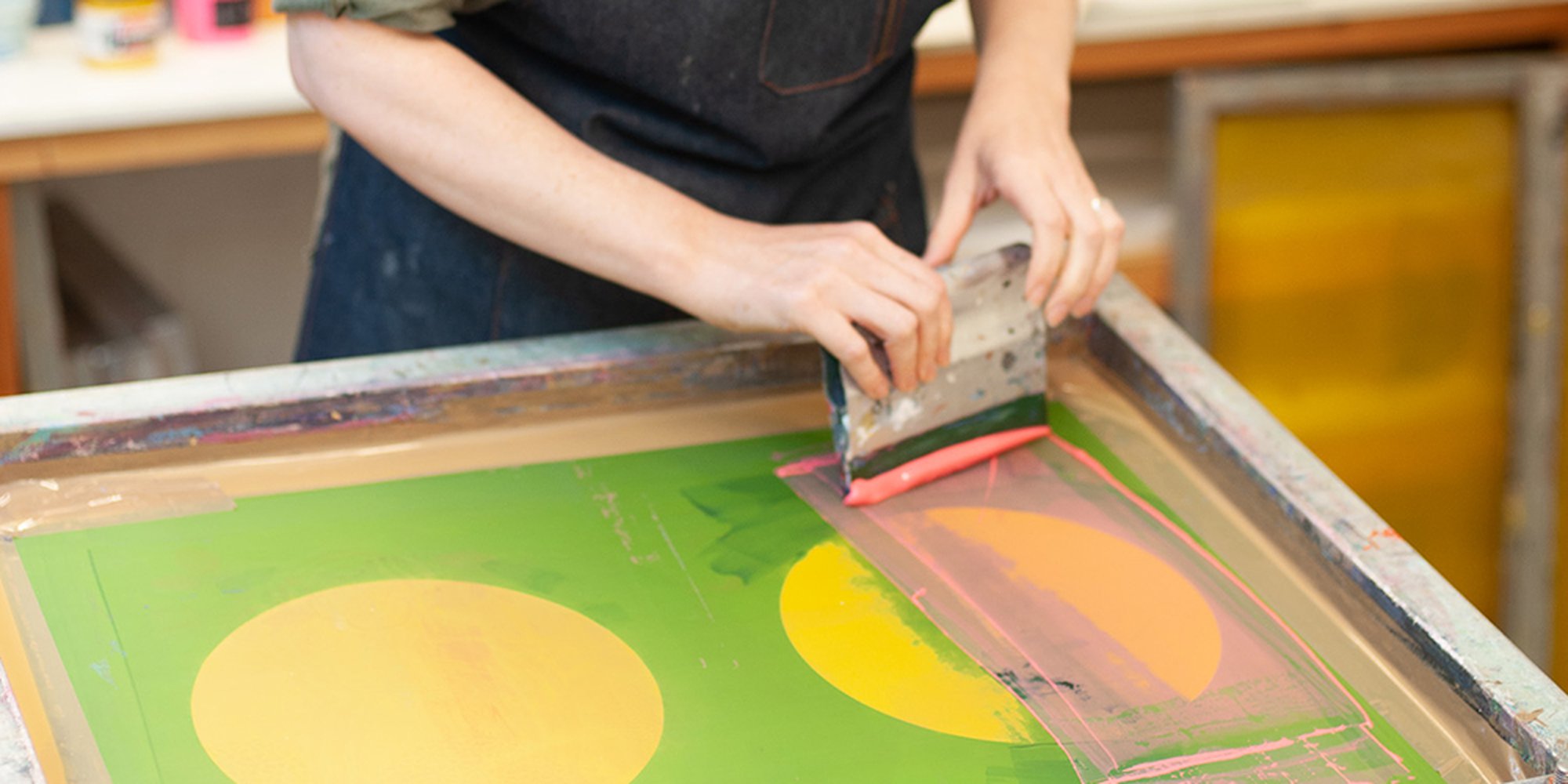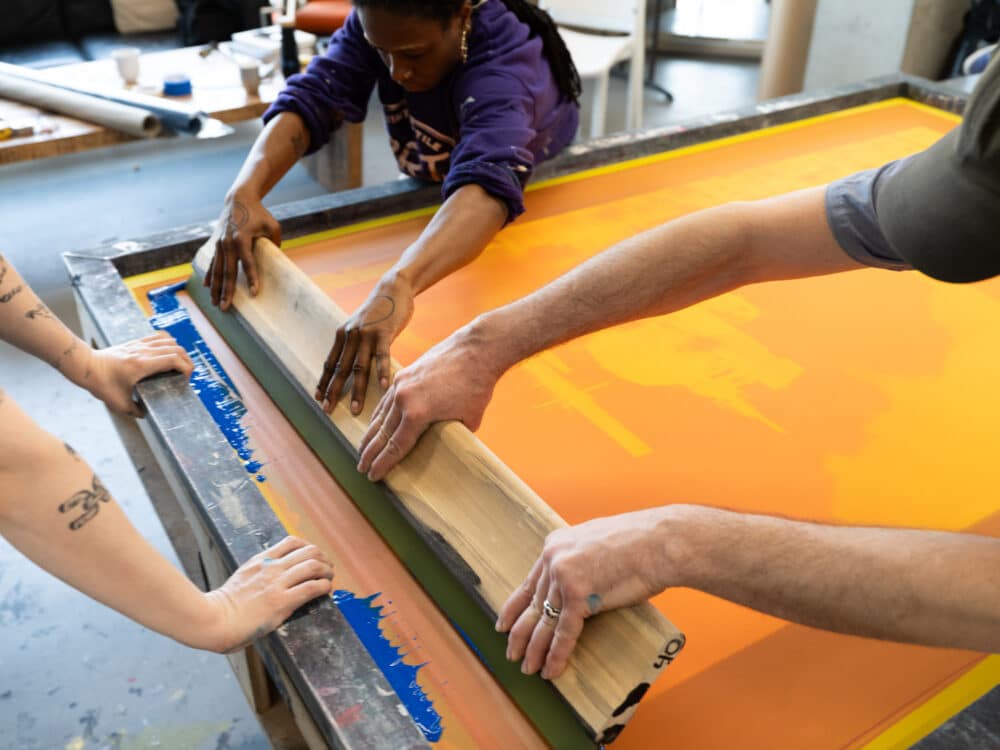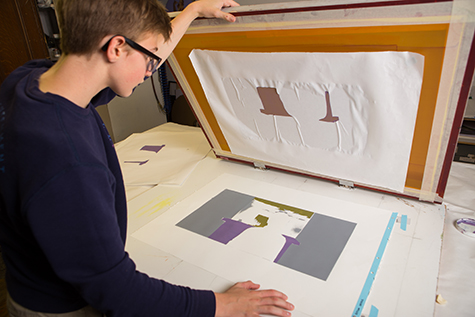The Important Guide to Recognizing Screen Printing and Its Versatile Uses
Screen printing has an abundant background that dates back to old times, evolving right into a sophisticated strategy utilized across different markets today. This guide checks out the complexities of the screen printing procedure, outlining its applications in style, home, and advertising and marketing design - 10:9 Design Company. Understanding these principles can open imaginative capacity for both imaginative and business jobs. The adhering to sections will disclose crucial ideas and methods to enhance one's screen printing undertakings
The History of Screen Printing
Although screen printing has origins that trace back centuries, its advancement shows the technological and artistic improvements of different cultures. Coming from old China, the strategy was at first utilized for enhancing textiles and later spread to Japan, where it became indispensable to Ukiyo-e woodblock printing. The technique shifted to Europe in the 18th century, where it got appeal among craftsmens and industrial printers. The invention of picture emulsion in the 20th century reinvented screen printing, enabling even more intricate styles and better efficiency. Musicians like Andy Warhol further drove its popularity, utilizing the medium to produce legendary works that mixed commercialism and art. By the late 20th century, screen printing had actually established itself as a versatile technique, utilized in style, advertising, and fine art. Today, it remains to evolve, integrating digital technology and increasing its applications across different sectors.
The Screen Printing Process Explained
Screen printing changes imaginative visions into substantial designs via a series of accurate actions. A photo is developed and after that moved onto a screen, usually made of fine mesh textile extended over a frame. A light-sensitive emulsion is related to the screen, which is exposed to light, setting in areas not covered by the photo. After washing out the unhardened emulsion, a pattern is created.
Next off, the screen is positioned over the substrate, whether it be fabric, paper, or another product. Ink is after that pressed via the open areas of the stencil making use of a squeegee, transferring the layout onto the substratum below. This process can be repeated for numerous shades, needing different displays for each and every color. Lastly, the printed item is treated using warmth to guarantee the ink adheres appropriately, leading to a long lasting, vivid layout on-line.
Kinds of Screen Printing Techniques

In addition, specialized techniques, such as discharge screen printing, eliminate color from the textile to develop softer prints, while aluminum foil screen printing uses metal aluminum foil to attain a glossy finish (10:9 Design Screen Printing Texas). Each method uses unique qualities, satisfying various get more info creative needs and manufacturing ranges, eventually broadening the possibilities within the screen printing domain
Applications of Screen Printing in Various Industries

In addition, the signs and advertising and marketing fields make use of screen printing for developing appealing screens and banners. This technique permits vibrant shades and elaborate designs that capture attention. In electronics, screen printing is employed for using conductive inks to circuit boards, necessary for component links. The home style market embraces screen printing to generate unique designs on fabrics and wall art. Generally, screen printing serves as a vital device across varied fields, boosting products with personalized and aesthetically attractive graphics.
Tips for Effective Screen Printing Projects
While embarking on a screen printing job, cautious focus to detail can substantially improve the last end result. Selecting top notch products is essential; this includes the screen, inks, and substratums. Utilizing ideal mesh counts can impact ink deposition and information resolution. Preparation is just as vital; detailed cleaning of screens and correct exposure times ensure crisp prints.
Next off, exact registration is important for multi-color prints. Utilizing alignment tools can aid attain exact layering. Additionally, testing prints on scrap materials before manufacturing helps determine prospective concerns without throwing away resources.

Regularly Asked Questions
What Products Are Ideal for Screen Printing on Fabric?
Cotton and polyester blends are suitable for screen printing on fabric because of their sturdiness and ink absorption. Furthermore, specialized fabrics like silk or canvas can create unique structures and coatings, enhancing the general style top quality.
Just how Do I Clean and Maintain Screen Printing Devices?
To maintain and clean screen printing devices, one need to routinely wash displays with suitable solvents, check mops for wear, lubricate moving components, and shop all things in a dry, dust-free environment to extend their life-span.
What Are the Environmental Influences of Screen Printing?
Screen printing can have significant environmental effects, consisting of chemical waste from inks and solvents, water usage during cleaning procedures, and energy usage. Environmentally friendly products and lasting practices are crucial for reducing these negative effects.
Can Screen Printing Be Done at Home Successfully?
Screen printing can be properly done at home with the right materials and techniques. Enthusiasts can create quality prints, though success depends on their ability degree, tools, and understanding of the process involved.
What Are the Costs Related To Beginning a Display Printing Service?

Starting a screen printing organization includes costs for tools, materials, and work space. Preliminary expenses commonly range from a few hundred to a number of thousand dollars, depending on the range, quality of machinery, and wanted production ability.
Screen printing has a rich background that dates back to old times, developing right into an advanced technique utilized across different industries today. An additional method, rotary screen printing, employs cylindrical displays, assisting in continuous printing on material rolls, thereby improving efficiency for large productions. Furthermore, specialty strategies, such as discharge screen printing, remove color from the fabric to produce softer prints, while aluminum foil screen printing applies metal foil to achieve a glossy surface. In the fashion market, screen printing is widely made use of to create vivid styles on apparel, allowing brand names to display their one-of-a-kind designs. Cotton and polyester blends are ideal for screen printing on material due to their longevity and ink absorption.